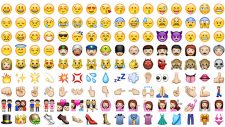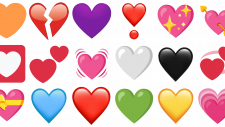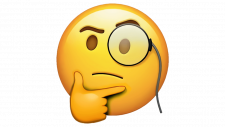Rolling Eyes Emoji
Texting with a friend, and suddenly, they send you an 🙄 emoji. What’s the message behind it? In this article, we delve into the world of this versatile emoji to help you interpret its meaning, explore its various uses, and learn how to respond effectively. The 🙄 emoji, often referred to as the “eye roll” emoji, typically conveys feelings of frustration or annoyance. It’s a quick way to express exasperation with a message or situation. But there’s more to it than meets the eye (pun intended).
Expressing Frustration
The primary purpose of the 🙄 emoji is to represent frustration. Its large, upward-glancing eyes mirror the look people give when they roll their eyes in real life. This emoji is the perfect choice to express irritation or annoyance, especially when dealing with distasteful messages or comments.
Injecting Sarcasm
Eye rolls aren’t solely reserved for frustration; they also serve as a tool for conveying sarcasm. When someone feels playful or a bit sassy, they may use the 🙄 emoji to emphasize their point with a touch of irony. It’s their way of saying, ‘Yeah, right’.When someone is bored out of their mind, the 🙄 emoji often finds its way into their text messages. It’s the perfect way to convey real-life moodiness through digital means.
Responding to 🙄
If someone uses the 🙄 emoji out of frustration or boredom, it’s likely they’re having a tough time. In such cases, be compassionate and inquire about their feelings. Sending a funny joke or a comforting text can brighten their day.
When faced with a sarcastic 🙄 emoji, consider responding with equal wit. Use emojis like 😉 (winking face), 😜 (winking face with tongue), or 🤪 (zany face) to keep the playful vibes flowing.
Similar Emojis
If you want to emphasize your mood further, you can combine the 🙄 emoji with other emojis that represent annoyance, frustration, or boredom. This not only conveys your emotional state but also adds depth to your message. Consider using emojis such as:
😑 (Expressionless Face): Conveys frustration or annoyance
🤦 (Person Facepalming): Displays frustration or irritation
🤨 (Face with Raised Eyebrow): Shows suspicion, concern, or disapproval
😬 (Grimacing Face): Depicts embarrassment or awkwardness
😒 (Unamused Face): Emotes irritation, displeasure, or grumpiness
Summary
In summary, the 🙄 emoji is a versatile tool for expressing a range of emotions, from frustration and annoyance to sarcasm and boredom. Understanding its various uses and responding appropriately will help you navigate the world of digital communication with ease. So, the next time you receive an 🙄 emoji, you’ll know exactly how to interpret it and respond accordingly.












